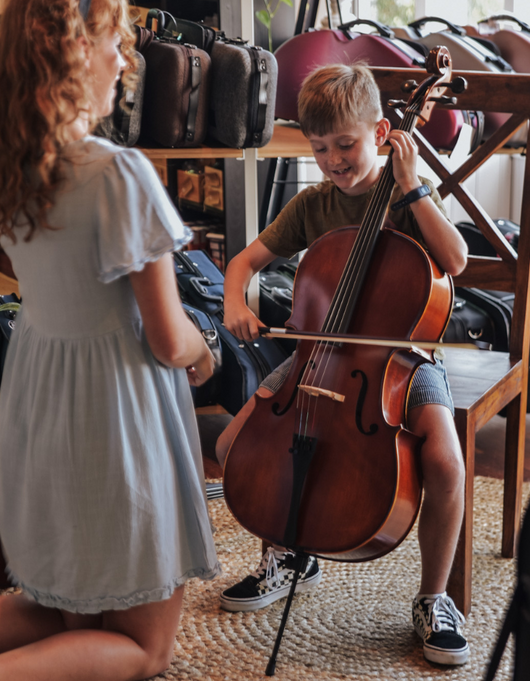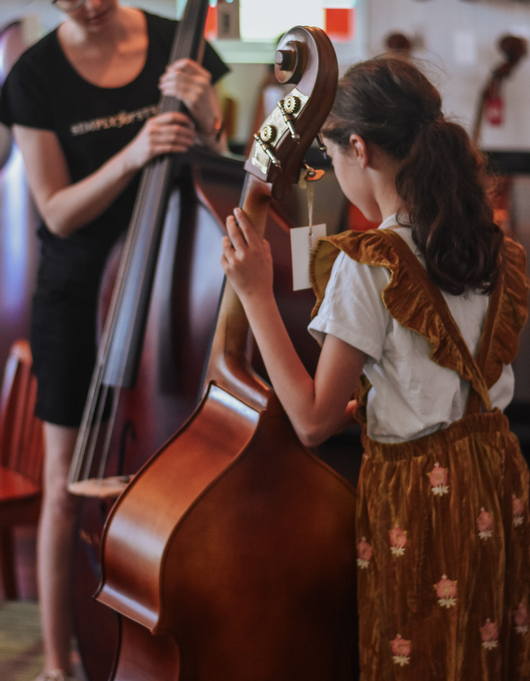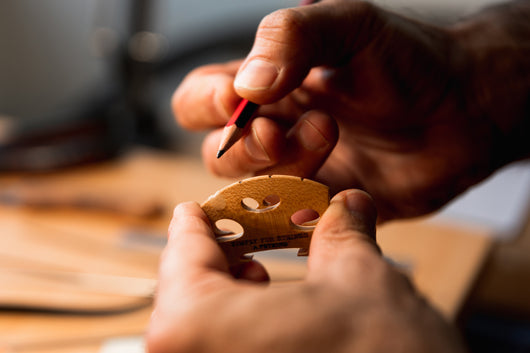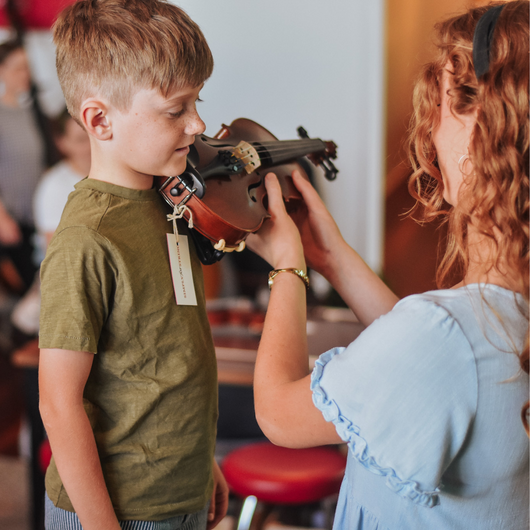Did you know double bassists get the choice between two types of bows? Double bass bows are crafted in French and German styles. Read this post to learn more about the differences between them, how they are used and some care tips for your double bass bow.

So what’s the difference?
French double bass bows are shaped like a cello bow or violin bow, but larger. The French-style frog is smaller and shorter than the German, which is noticeably taller. Usually the length of the German-style stick is slightly longer.
As well as having a larger frog, overall the double bass bow is heavier and shorter than a cello bow. This is necessary because of the larger strings. Double bass rosin is also much stickier than for the other stringed instruments.
Both French and German styles generally have a similar weight and amount of bow hair, although this can vary between makers. Traditionally, the German bow was longer and broader, with a wider “ribbon” of horsehair. Some makers still adhere to this.
Some of our brands measure as follows:
Read our practice guide to buying a bow for your instrument.
Why does the difference exist?
The German bow is the older style. It is a development from the baroque bows used by upright viol players. Bassists who prefer the German bow style like the power it gives, especially in an orchestral setting.
The French style bow developed later, as the violin family appeared and the modern bow was invented. It became popular in the nineteenth century after it was adopted by the great virtuoso Bottesini. Bassists who use the French style refer to greater control over a wider range of techniques, and better expressive range.
How are they used?
The German bow is an “underhand” style: the bassist grips the frog from below in a loose fist with the palm facing partly upward. The three middle fingers fit between hair and stick. The index and middle fingers secure both stick and frog, with the ring finger supporting them; the little finger provides support and balance from underneath the frog and the thumb holds the top of the stick. This is a carry over from the days when bows didn’t have a screw for tightening. The bow was held in this way to control the tension of the hairs.
The French bow is an “overhand” style: similar to the modern cello bow hold but with slightly straighter fingers, it’s held with the thumb on one side of the stick; the other four fingers are evenly distributed for balance and control on the other side of the stick. The index finger touches the bow grip while the other three grip the frog.

Which style should I use?
Generally speaking, a lot of students will begin their double bass journey using a French style bow. It is sometimes said to be easier to hold than a German bow. If you’re not sure which style you should use, we recommend visiting us in store at Simply for Strings to trial our selection of handcrafted double bass bows.
It’s mostly about preference, and who your teacher is/was. Whichever bow you or your teacher prefers, if you practice consistently and do the work that’s required, you will be able to use your bow in all situations regardless of the frog style. There are also times when one bow can be preferred for a particular style or piece. Many bassists have mastered both bow types and keep a French and a German bow with their instruments. There are plenty of brilliant virtuosos and professional bassists around the world who use both, or prefer only one style.
Jump start your beginner’s journey with our expert advice.
Parts of the double bass bow
There are lots of parts that make up a double bass bow, whether it’s a German or French style.
The parts you can see:
- Stick
- Varnish
- Leather bow grip
- Silver winding
- Frog
- Eye
- Silver mounting
- Screw
- Slide
- Spreader wedge
- Ferrule
- Tip
- Tip facing
- Bowhair
The parts you can’t see:
- Wedges
- Underslide
- Mortise and Eyelet
- Knot (in both ends of the hair)
Learn more about the history of bow making.
Our quick care tips for your double bass bow
- Loosen the bow when not using it
- Never overtighten
- Keep your bow hair clean: don’t touch with your fingers except as part of your bow hold; if the area near the frog gets too dirty and greasy, visit your local violin shop for advice and servicing
- Keep the stick clean using a microfibre cloth
- Polish the silver parts with a firm microfibre cloth
- Periodically check the tip facing (plastic or bone faceplate around the hair at the tip) for cracks. If the tip facing is damaged, it will weaken the end of the bow and cause much greater damage to the bow
- Rehair once or twice a year, depending on how often you play
























